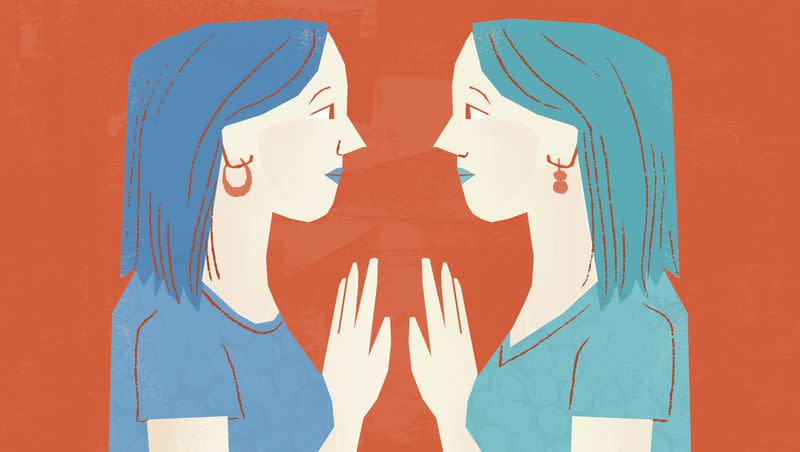Perspective: Have you seen my doppelgänger?

I’m not a twin, and I don’t consider myself to have “one of those faces” that is easily mistaken for others. But I can’t stop rewatching the end of an instagram reel where a woman turns her head to face the camera and — it’s me.
Or at least she looks uncannily like me. Same hair color, same nose, same eyes, same smile, even the same slightly slouchy posture of someone who grew tall faster than everyone else. If not for her much shorter hair, you could probably convince me that it is in fact me and I’ve just forgotten the entire memory.
Growing up, I always thought doppelgängers were really a cover for identical twins separated at birth (founded in part by the movie “The Parent Trap”), but it turns out that they are not a Hollywood hoax. Your double could be out there — but likely with slight variations.
Twenty-four years ago, a Canadian photographer named Francois Brunelle began photographing doppelgängers for a project he titled “I’m not a look-alike!” Each photo in the series is a simple black and white portrait of two people standing close together, but the remarkable resemblance between the two people is beautifully unsettling. Hairstyles might vary, one face might be slightly rounder, but these people could easily be mistaken for each other in public. Brunelle’s collection of photos makes this mythic phenomenon seem shockingly commonplace. But how likely are you to find your duplicate?
“There’s only a 1 in 135 chance that there’s a single pair of exact doppelgängers,” according to a BBC article published in 2016 — but that doesn’t mean you can’t find your near look-alike.
Related
The BBC article cites research from a 2015 study that uses eight facial measurements to compare faces and search for duplicates in a database of 3,982 faces. So your ear may protrude more or your forehead may be wider than your look-alike’s, but as a statistician at UC Berkeley told the BBC, “It depends whether we mean ‘look-alike to a human’ or ‘look’alike to facial recognition software’.” Whether or not you believe your doppelgänger exists depends on this distinction. But it is reassuring to know that if your double commits a crime, those detectable differences can prove that your face is innocent.
In 2022 the journal Cell Reports published an article exploring the genetic similarities between look-alike humans and found that doppelgängers share DNA, even if their ancestry is from different parts of the world. The study examined 32 look-alike participants from Brunelle’s photography project using three different facial recognition programs. The software scored 16 of the pairs similarly to identical twins.
The study found that “people with extreme look-alike faces share common genotypes” while two things differed: Their microbiomes (the bacteria, fungi, viruses and genes that naturally live on our bodies) and their epigenomes (the influence of environmental stimuli on us and passed down from our ancestors that can disrupt normal gene expression). “Genetics put them together, and epigenetics and microbiome pulls them apart,” Dr. Manel Esteller, a co-author of the report, told New York Times writer Kate Golembiewski.
Accounting for small distinctions, “it’s not unreasonable to assume that you, too, might have a look-alike out there,” Esteller said. And while I can attest it’s eerie to see your face on someone else, it also opens up an opportunity for connection.
Charlie Chasen and Michael Malone, two participants in Brunelle’s photography project, have developed a close friendship with each other, according to an interview with CNN, after meeting when Malone joined Chasen’s band as a guest singer. Chasen describes their look-alike relationship as “another way for us to be even better friends and to bond more. ... We’ve got this thing between us that not everybody else has.” Malone described the doppelgänger phenomenon to The New York Times as “another way to connect all of us in the human race.” Brunelle seems to share the same idea: “If you meet someone that looks like you, you have an instant bond because you share something,” he told BBC.
We’re raised to think that we are unique. I believed I was until I saw my face on another woman. But any reason for connection in this age is a reason to celebrate, even if it makes you a little less distinct. Your doppelgänger could be out there, across the neighborhood or across the world. As Golembiewski puts it, “There are, after all, only so many ways to build a face.”

